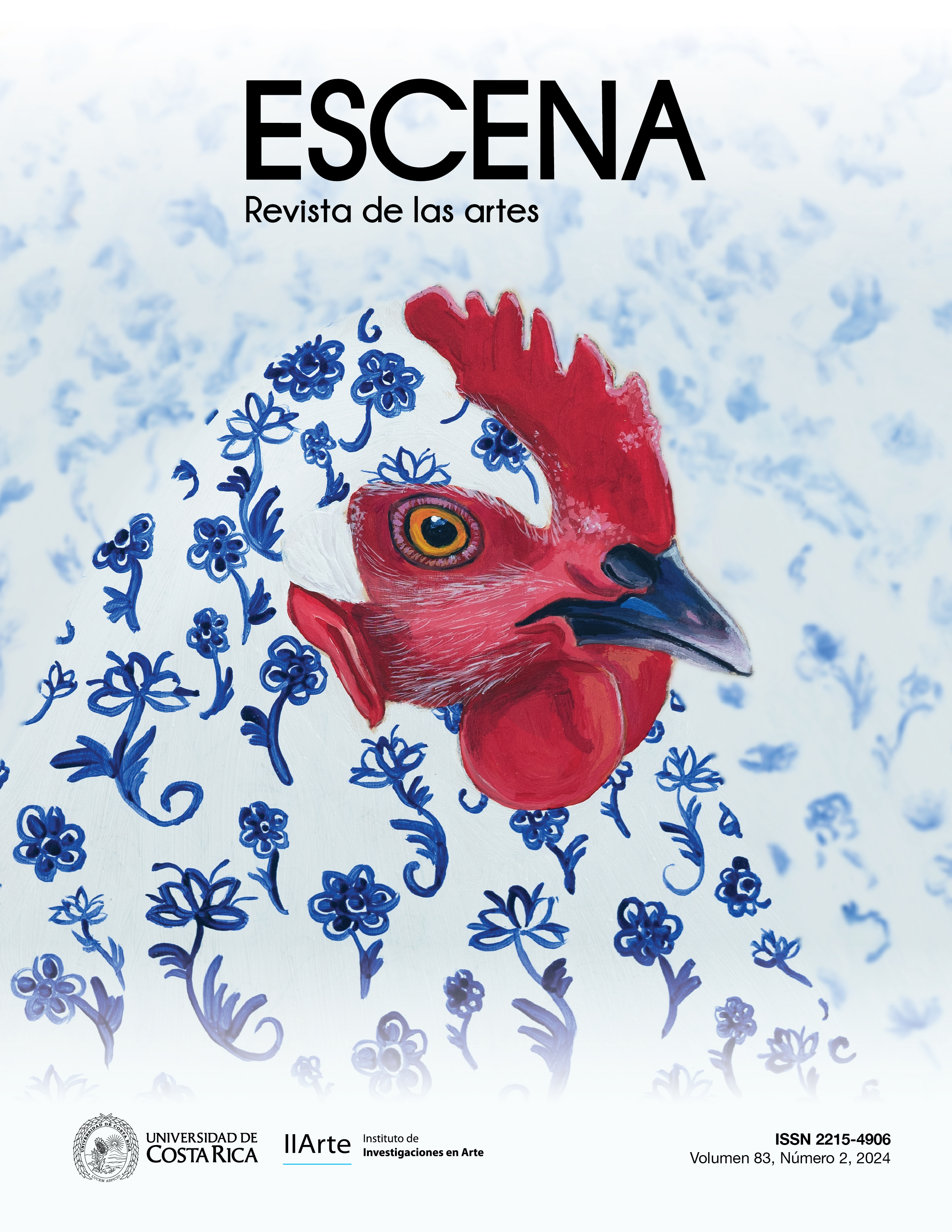Abstract
Introduction: This article is about three reference cases of contemporary Mayan art: the Kaqchikel collectives Sotz’il, Ajch’owen, and the Ruk’u’x movement of Mayan artists. Objective: The text aims to deepen into the meanings and symbolisms of artistic expressions from the ancestral Mayan roots and their transformation processes, based on new visions of contemporary performing Mayan arts. Methods: Based on documentary analysis, in-depth interviews, and observation of artistic practices of the aforementioned groups, their particular conception of art is analyzed, also their contributions from aesthetics, and sociopolitical proposals. Results: The ways of naming artistic expressions from Mayan languages are delved into, as well as relevant aspects of the study groups, understood as cultural assembly in relation to other social dimensions. Conclusions: Processes of identity strengthening and transformation are demonstrated from the contributions of contemporary Mayan art, in dialogue with transcultural and glocal aspects.
References
Caballero-Mariscal, D. (2018). Ecos del enfrentamiento armado guatemalteco veinte años después del conflicto. El araigo de la violencia. LiminaR, 16(1), 150-168. https://doi.org/10.29043/liminar.v16i1.570
Casaús Arzú, M. E. (2018). Guatemala: linaje y racismo. F&G Editores.
Cepeda Sánchez, H. (2009). Industria, política y movimientos culturales: una lectura desde el fenómeno comercial del rock y el pop. Estudios sobre las culturas contemporáneas. Época II, 15(30), 85-104. http://www.redalyc.org/articulo.oa?id=31612027005
Curruchiche Otzoy, G., García, A. P., & Taquirá, S. (2009). Ruxe’el Mayab’ K’aslemäl. Raíz y espíritu del conocimiento maya. PROEIMCA, Universidad Rafael Landívar.
Fernández Gómez, R. (2004). Transculturalidad y arte contemporáneo. La no dualidad como horizonte de la estética. Contrastes. Suplemento, (9), 104-122. https://dialnet.unirioja.es/servlet/articulo?codigo=1155237&orden=0&info=link
Figueroa Ibarra, C. (2017). Los acuerdos de paz en Guatemala, 20 años después. LASAFORUM, 48(1), 9-13. https://forum.lasaweb.org/files/vol48-issue1/Debates-ProcesosPaz-4.pdf
Freddi, A., & Grassi, P. (2020). La paz fallida. De compasión y desigualdad en el “posconflicto” guatemalteco. CONFLUENZE. Revista Di Studi Latinoamericani, 12(1), 423-446. https://doi.org/10.6092/issn.2036-0967/11386
Galea Robles, C. (2014, 23-27 de abril). Organizaciones artísticas; entre la creación y la gestión [ponencia]. Primer Congreso Latinoamericano de Gestión Cultural, Universidad de Santiago, Santiago, Chile. http://observatoriocultural.udgvirtual.udg.mx/repositorio/handle/123456789/63
García von Hoegen, M. A. (2017). Combinación de danza, teatro y música. Obra Ajqomal, grupo Sotz’il. Registros de la autora.
Grupo Sotz’il. (2015). Ati’t Xajoj (Danzando con la abuela). Edición del autor.
Ismael-Simental, E., Kurjenoja, A., López Cuenca, A., & Rodríguez Medina, L. (2019). Building the city through culture: Puebla’s cultural urban assemblage (1987-2017). Social & Cultural Geography, 23(1), 101-109. https://www.tandfonline.com/doi/full/10.1080/14649365.2019.1698759?scroll=top&needAccess=true
Melgar, C., Medina Bermejo, A., & Barrientos, R. (2021). Logros y desafíos de los Acuerdos de Paz en Guatemala. Instituto Centroamericano de Estudios Fiscales.
Movimiento de artistas mayas Ruk’u’x. (2014). Ka’i, oxi’ Tzij pa ruwil ru patän. Samaj ri Ajch’owen (Algunas palabras sobre el trabajo del artista maya). Sotz’il.
Ortega Centella, V. (2015). El artivismo como acción estratégica de nuevas narrativas artístico- políticas. Revista Calle 14, 10(15), 100-111. https://doi.org/10.14483/udistrital.jour.c14.2015.1.a08
Özden, M., & Brunschwig, S. (2013). Los derechos culturales. Centro Europa-Tercer Mundo (CETIM). https://www.cetim.ch/product/los-derechos-culturales/
Robertson, R. (2000). Glocalización: tiempo-espacio y homogeneidad heterogeneidad. Zona Abierta, (92-93), 213-242.
Secretaría de la Paz [Sepaz]. (2006). Los Acuerdos de Paz en Guatemala. 2006 Año Nacional de la Paz. Sentidotorio de Derechos Culturales.
Simon, J. M. (2020). Muralismo y memorias en América Latina: el caso del mural comunitario y colaborativo sobre la masacre de Panzós en Guatemala. Actos, 2(3),103-121. http://revistas.academia.cl/index.php/actos/article/view/1689
Vásquez Monterroso, D. (2011). Lo maya como nacional: radicalidad artística indígena y ethos señorial en Guatemala. XXXV Coloquio Internacional de Historia del Arte. Universidad Nacional Autónoma de México, México.
Comments

This work is licensed under a Creative Commons Attribution-NonCommercial-NoDerivatives 4.0 International License.
Copyright (c) 2024 Magda Angélica García von Hoegen



